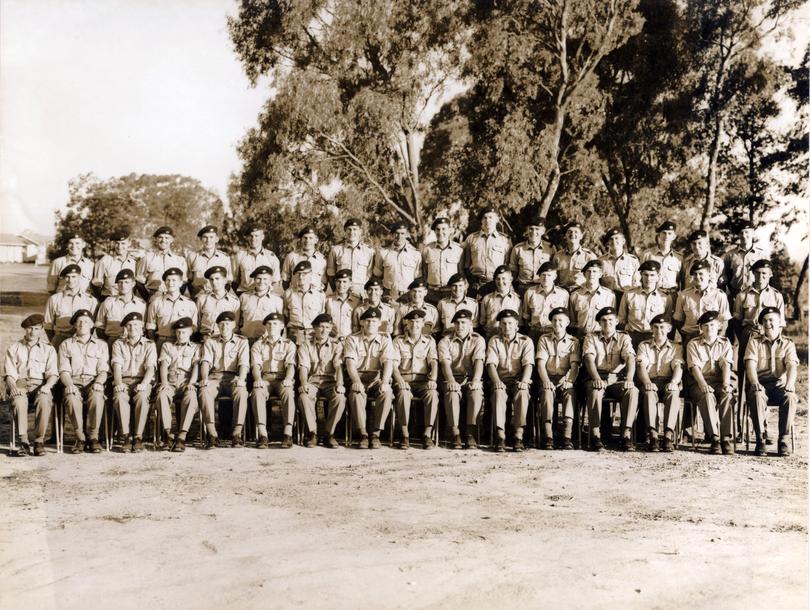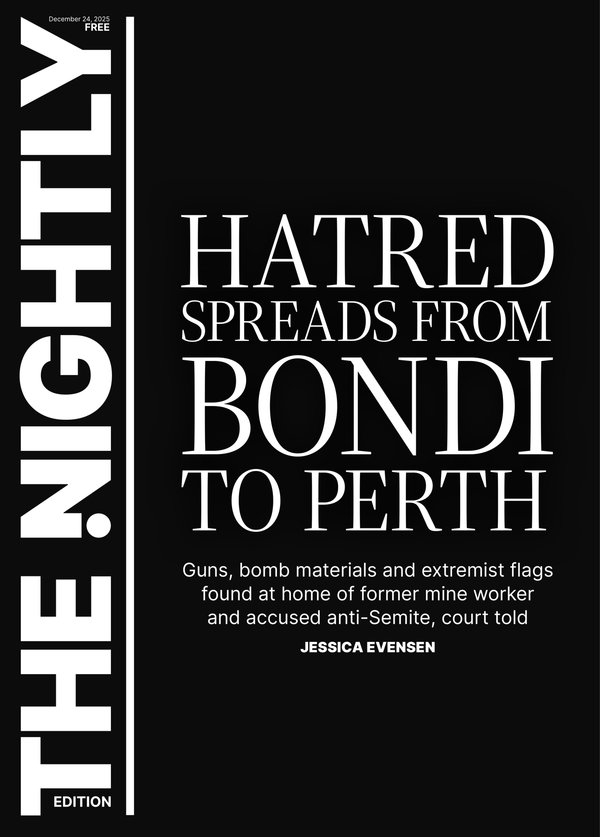National Service members still fighting for recognition and compensation more than five decades later

For some, it was a grand adventure. A chance to see a bit of the world, or at least Australia, get fit and learn new skills.
For others, it was a hellish time of broken relationships and addiction set against the spectre of being sent to the front line of a war in Asia.
For all, it was two years of service for which there has been no real compensation.
Sign up to The Nightly's newsletters.
Get the first look at the digital newspaper, curated daily stories and breaking headlines delivered to your inbox.
By continuing you agree to our Terms and Privacy Policy.More than 300,000 Australians were forced into national service in two tranches — between 1951 and 1959 and from 1965 until 1972.
They were plucked as 20-year-olds from factories, farms and offices and sent to the Puckapunyal army base in central Victoria.
From there they were deployed to military bases around Australia, Papua New Guinea and Borneo. They never came under enemy fire but the inherent physical dangers of military training meant 1500 were wounded and 187 died in active service.
For half a century after being discharged, they quietly got on with life, building families, businesses and careers.
In an era where every government-caused inconvenience is met with a compensation payout or entitlement, the national servicemen sought no financial recompense.
They accepted the disruption to their jobs and made no song and dance of the fact their wage as a nasho was usually a fraction of what they earned as civilians.
Today that quiet ambivalence is ending. The reason? The nashos are getting on.
The oldest cohort, those conscripted during the most intense fighting of the Korean war, are in their 90s. The youngest, those drafted as Australia withdrew from Vietnam, are in their mid-70s.
Lost years
“Our primary goal is to obtain medical and dental benefits for our members,” the president of lobby group Nasho Fair Go, Geoff Parkes, told The Nightly.
The 73-year-old Victorian is fighting on behalf of the men conscripted between 1965 and 1972. Of the 48,000 people who were drafted but never sent to Vietnam, about 30,000 are alive today.
Some are beset by health problems they believe can be traced to their service but do not qualify for subsidised medical treatment because they can’t prove the link.
Mr Parkes reckons they shouldn’t have to. Having a few medical, dental and physiotherapy bills paid by the Government is modest requital for the loss of two years of civilian life.
“At present, the only benefit we receive is the veteran white card, which is available to any person who has done one day’s continuous, full-time service in the ADF,” Mr Parkes said.
“Its main benefit is mental health care. It also provides specific health care for injuries or conditions incurred during military service. We receive no benefits as reparation for the two years of our youth that we lost to conscription.”
For many nashos, the disruption caused by those 24 months would reverberate through their lives, for good and bad.
Luck of the draw
“We were all marched into a drill hall and that’s when they made you aware why you had been called up — because of the communist threat from the north and that it was better to fight in Vietnam than on our shores.”
Cedric Bell remembers vividly his first days at Puckapunyal, or “Pucka” as the base was known.
“During one of the sessions before basic training started we were told it would be better to break up with your girlfriend now so you didn’t get a Dear John letter in the jungle and end up shooting yourself,” the 78-year-old said.
“We were told about diseases, alcohol problems, and the importance of good hygiene. All of this was supported by graphic movies.
“Basic training started with fitness, weapons drills, long hours of marching and field exercises. Every process was preparing you for your next posting into a corps — infantry, transport, artillery, ordnance or what not — within 10 weeks.

“I applied for air dispatch as air crew in army transport aircraft but was given ordnance, which was another 10 weeks of training. From here I think the biggest thing on your mind was whether you would be good enough if you went to war.”
Mr Bell was training near Wodonga in Victoria when he broke his ankle, completing the course on crutches.
National servicemen can apply for free medical treatment for conditions they can attribute to their service. But proving cause and effect is difficult because army records are patchy and few men sought medical attention.
“You learnt very quickly not to complain or show pain as you would be seen as a ‘malingerer’ and this would make life a lot harder,” Mr Bell said.
David Butterfield recalls many hard moments when he was assigned to the Royal Australian Artillery after his birth date marble was drawn from the barrel in 1966.
Like many nashos, Mr Butterfield lived every day wondering whether he would be sent to Vietnam, a possibility that became a probability when he was dispatched to the Canungra jungle training centre in Queensland.
“You’re sent to Canungra to prepare for deployment overseas, mainly Vietnam,” he said.
“It was a tough place, most time spent on exercises in the rain forest with leeches, snakes and unfriendly vegetation. Hard physical training with obstacles and muscle-toughening courses. We had two days off in three weeks.
“I was expecting to go to Vietnam as a replacement gunner for 4th Field Regiment. It didn’t happen. They didn’t tell me to and I didn’t volunteer.
“I had no desire to go there. Like many others I still live with the stigma of not going to Vietnam.”
The big disconnect
Mr Parkes believes many servicemen sustained injuries that were not purely physical.
“Drinking and tobacco were the ingrained culture of the army,” he recalled.
“We used to get free smokes in the canteen from the Phillip Morris girls. Beer was very cheap. I served alongside Vietnam veterans, all of whom smoked and drank heavily.

“I quickly became addicted to both. We drank every day, usually at lunch time and always at night.”
Reintegration into civilian life was difficult for some. The short hair demanded by the defence forces made servicemen easily identifiable at a time when the Vietnam War was unpopular. Abuse in public was common.
Employers were bound by law to hold open positions until a serviceman completed his two years but the system was not perfect.
“Going back to civilian life was the worst part of my national service,” Mr Parkes said.
“Nobody wanted to know about nasho time. Start talking about it and the room would clear. Complain about it and you’d be told ‘get over it’ or ‘yeah but you didn’t go to Vietnam’.
“The world had moved on without us. Old friends and family were hard to connect with.”
It would be almost 30 years before the sacrifices made by national servicemen were officially recognised with the creation by then-Prime Minister John Howard of the Anniversary of National Service 1951-1972 medal.
Silent treatment
Mr Parkes is furious that the Department of Veterans’ Affairs doesn’t do more to publicise the existence of the veteran white card.
“Three-quarters of our cohort did not know of it before joining Nasho Fair Go. Given that its main purpose is to provide mental health care, this makes a mockery out of the Royal Commission into Defence and Veterans Suicide,” he said.
He is also perplexed by anomalies in the system.
“The men who served their conscription through six years in the Citizen Military Forces do not qualify for the white card,” he said.
“Their six years was not considered as one day’s continuous service.”
Then there’s the irregularities thrown up by the election of Gough Whitlam in December 1972.
“Men who served out their full period of conscription after Whitlam was elected qualify for free cancer treatment via the veteran white card.,” he said.

“Despite many requests, the Department of Veterans’ Affairs refuses to automatically alert the 8000 men who qualify or note it on their cards. DVA has our records. It would be simple. We maintain this is deliberate.
“Some of our members who qualify for free cancer treatment have spent many thousands of dollars of their retirement funds on treatment, as they did not know about the white card or its benefits.
“DVA will only back pay claims within three months of treatment. We ask that this be waived for our members who are eligible.
“Nashos who opted to leave the army when Whitlam was elected, because he told them they could go home, had their discharge certificates stamped with ‘Discharged on the Grounds of Extreme Hardship’.
“It was a contrived mechanism. No information was given to these men when it happened. As a result, they do not receive the Australian Defence Medal, a defence housing loan, or free cancer treatment — all benefits given by Whitlam to the small group of Nashos who served out their full term of enlistment after December 7, 1972.
“The thing that angers them the most is that they do not have an honourable discharge that they can show their children and grandchildren,” he said.
Pleas to the Government to rectify this have so far fallen on deaf ears but Mr Parkes hopes the looming Federal election will see the Government more open to change, particularly regarding access to free dental care.
It is a thorny problem for Veterans Affairs Minister Matt Keogh, who risks the ire of men who saw combat in Vietnam. Some of those veterans don’t believe nashos should be entitled to more benefits, particularly the coveted gold card.
“National Servicemen with service-related dental conditions are entitled to the same treatment as any other veteran with a service-related dental condition, regardless of which piece of DVA-administered legislation their condition is accepted under,” Mr Keogh said.
“We are also expanding eligibility for the gold card, including for national servicemen, through legislative reforms funded in this year’s Budget.”
Qualification for benefits is dictated by periods of service and experience. Nashos who fall under the Veterans’ Entitlements Act 1986 may be eligible for a gold card if they meet certain criteria.

“In the 2024-25 Budget we announced an investment of $222 million on legislation reform to simplify and harmonise the veterans’ compensation and rehabilitation system,” Mr Keogh said.
The proposed Veterans’ Entitlements, Treatment and Support (Harmonisation and Simplification) Bill 2024 will see all national servicemen able to make claims under the Military Rehabilitation and Compensation Act 2004 but access to the gold card will be restricted to those that meet specified criteria.

